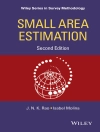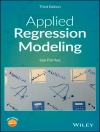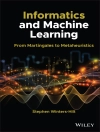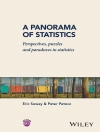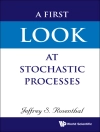International Association for Statistical Computing The International Association for Statistical Computing (IASC) is a Section of the International Statistical Institute. The objectives of the Association are to foster world-wide interest in e?ective statistical computing and to – change technical knowledge through international contacts and meetings – tween statisticians, computing professionals, organizations, institutions, g- ernments and the general public. The IASC organises its own Conferences, IASC World Conferences, and COMPSTAT in Europe. The 17th Conference of ERS-IASC, the biennial meeting of European – gional Section of the IASC was held in Rome August 28 – September 1, 2006. This conference took place in Rome exactly 20 years after the 7th COMP- STAT symposium which was held in Rome, in 1986. Previous COMPSTAT conferences were held in: Vienna (Austria, 1974); West-Berlin (Germany, 1976); Leiden (The Netherlands, 1978); Edimbourgh (UK, 1980); Toulouse (France, 1982); Prague (Czechoslovakia, 1984); Rome (Italy, 1986); Copenhagen (Denmark, 1988); Dubrovnik (Yugoslavia, 1990); Neuchˆ atel (Switzerland, 1992); Vienna (Austria, 1994); Barcelona (Spain, 1996);Bristol(UK, 1998);Utrecht(The Netherlands, 2000);Berlin(Germany, 2002); Prague (Czech Republic, 2004).
Mục lục
Classification and Clustering.- Issues of robustness and high dimensionality in cluster analysis.- Fuzzy K-medoids clustering models for fuzzy multivariate time trajectories.- Bootstrap methods for measuring classification uncertainty in latent class analysis.- A robust linear grouping algorithm.- Computing and using the deviance with classification trees.- Estimation procedures for the false discovery rate: a systematic comparison for microarray data.- A unifying model for biclustering.- Image Analysis and Signal Processing.- Non-rigid image registration using mutual information.- Musical audio analysis using sparse representations.- Robust correspondence recognition for computer vision.- Blind superresolution.- Analysis of Music Time Series.- Data Visualization.- Tying up the loose ends in simple, multiple, joint correspondence analysis.- 3 dimensional parallel coordinates plot and its use for variable selection.- Geospatial distribution of alcohol-related violence in Northern Virginia.- Visualization in comparative music research.- Exploratory modelling analysis: visualizing the value of variables.- Density estimation from streaming data using wavelets.- Multivariate Analysis.- Reducing conservatism of exact small-sample methods of inference for discrete data.- Symbolic data analysis: what is it?.- A dimensional reduction method for ordinal three-way contingency table.- Operator related to a data matrix: a survey.- Factor interval data analysis and its application.- Identifying excessively rounded or truncated data.- Statistical inference and data mining: false discoveries control.- Is ‘Which model . . .?’ the right question?.- Use of latent class regression models with a random intercept to remove the effects of the overall response rating level.- Discretefunctional data analysis.- Self organizing MAPS: understanding, measuring and reducing variability.- Parameterization and estimation of path models for categorical data.- Latent class model with two latent variables for analysis of count data.- Web Based Teaching.- Challenges concerning web data mining.- e-Learning statistics — a selective review.- Quality assurance of web based e-Learning for statistical education.- Algorithms.- Genetic algorithms for building double threshold generalized autoregressive conditional heteroscedastic models of time series.- Nonparametric evaluation of matching noise.- Subset selection algorithm based on mutual information.- Visiting near-optimal solutions using local search algorithms.- The convergence of optimization based GARCH estimators: theory and application.- The stochastics of threshold accepting: analysis of an application to the uniform design problem.- Robustness.- Robust classification with categorical variables.- Multiple group linear discriminant analysis: robustness and error rate.







